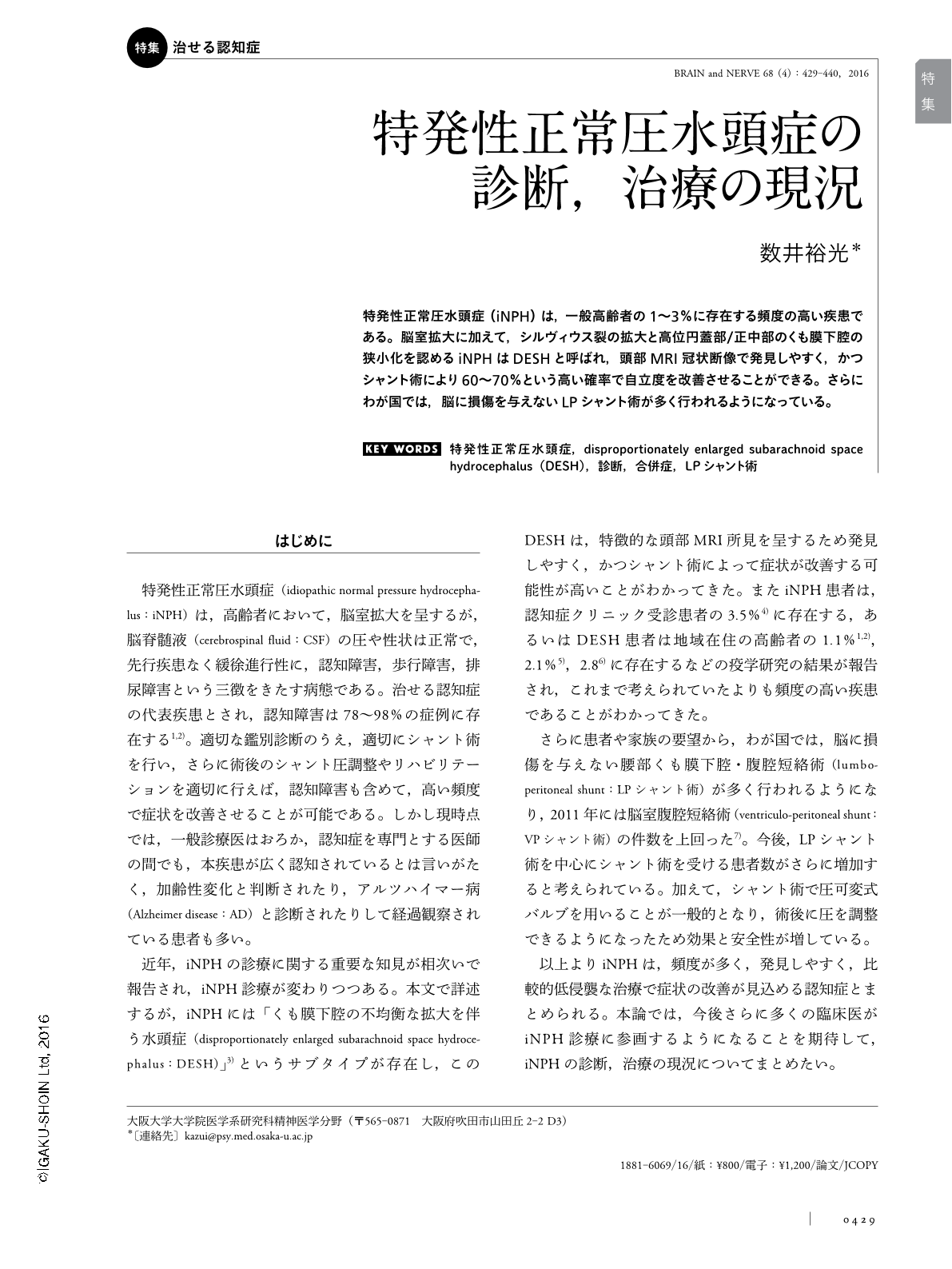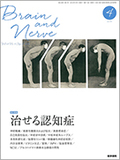Japanese
English
- 有料閲覧
- Abstract 文献概要
- 1ページ目 Look Inside
- 参考文献 Reference
特発性正常圧水頭症(iNPH)は,一般高齢者の1〜3%に存在する頻度の高い疾患である。脳室拡大に加えて,シルヴィウス裂の拡大と高位円蓋部/正中部のくも膜下腔の狭小化を認めるiNPHはDESHと呼ばれ,頭部MRI冠状断像で発見しやすく,かつシャント術により60〜70%という高い確率で自立度を改善させることができる。さらにわが国では,脳に損傷を与えないLPシャント術が多く行われるようになっている。
Abstract
Idiopathic normal pressure hydrocephalus (iNPH) is a common disease with a prevalence of 1 to 3% in the elderly. The Japanese society of normal pressure hydrocephalus has developed clinical guidelines for the management of idiopathic normal pressure hydrocephalus and conducted two multicenter prospective studies for iNPH, which are called SINPHONI and SINPHONI-2. These guidelines define disproportionately enlarged subarachnoid space hydrocephalus (DESH) as iNPH with the specific MRI features of tight high-convexity, the presense of medial subarachnoid spaces and ventriculomegaly. Patients with DESH are known to be highly responsive to shunt surgery. Specifically, 60 to 70% of patients with DESH see improvements in their daily living activities following shunt surgery. While ventriculo-peritoneal shunt surgery (VPS) is most commonly used in western countries, lumbo-peritoneal shunt surgery (LPS) is increasingly used in Japan, as patients with iNPH and their caregivers are more willing to accept lumbar surgery than cranial surgery. LPS does not produce puncture-induced damage to the brain and has been recently confirmed to be effective for the treatment of iNPH. It is important for physicians to consider iNPH while examining patients with dementia, as iNPH is common, treatable, and easy to diagnose using MRI.

Copyright © 2016, Igaku-Shoin Ltd. All rights reserved.


